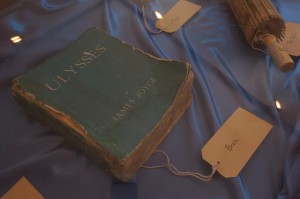It seems like a rite of passage for any book aspiring to achieve classic status that it must endurea period of resistance fromthe culture in which it first appears, and from which it is conceived. Midwifing is the author’s own genius, which itself resists a clean conception and, finding flaws, exposing the eccentricities of the present, is detested for doing so. Ironically, it turns out that being on the wrong side of cultureoften means that many of the classics have turned up on the right side of history, by not becoming it. Christopher Klein at History has made his own contribution in reminding us of the classics that were banned at one point. One examples comes from James Joyce. The publication of his story,Ulysess, has a history that itself is worthy of being called an Odyssey:
James Joyces radical, stream-of-consciousness story of Leopold Blooms daylong journey across Dublin stoked a fiery reactionliterallyon both sides of the Atlantic Ocean after its 1922 publication. According to author Kevin Birminghams The Most Dangerous Book: The Battle for James Joyces Ulysses, government authorities in the United States and England not only banned what is now considered a modernist masterpiece, they also confiscated and burned more than 1,000 copies. Until a federal judge ruled in 1933 that Ulysses was not obscene, Americans were forced to track down smuggled copies of Joyces novel in order to read it.
Mark Twain also made the cut, who said history does not repeat itself but rhymes. Well, there is certainly a truth in that. First,Canterbury, then Huckleberry. And ‘rhymes’ itself contains ‘Rye’, whose catcher is also on the list. But does ‘Rye’ rhyme with ‘Grey’–if so, there is still hope, unless culture makes a comeback, and history remains in the dustbin, in final rhymewithFinn.
Read his full post atHistory

